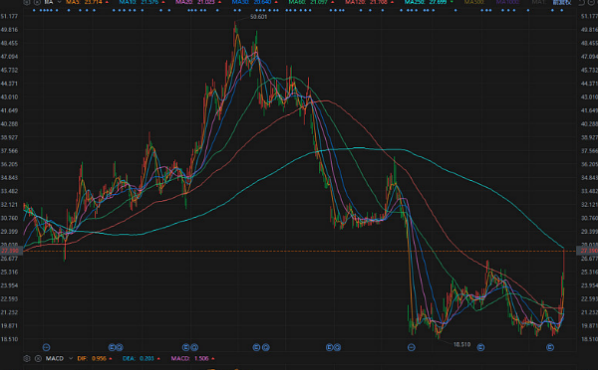The world of options trading is like a vast ocean— sometimes calm and serene, sometimes turbulent and unpredictable. To navigate these waters smoothly, one needs not only a keen sense of market trends but also a set of clear operational rules. For beginners, the complexity of options trading can seem daunting, but by mastering core strategies, one can simplify the process and identify opportunities amid market volatility. Today, we will introduce you to the four golden rules of options trading, offering a systematic understanding of its essence and enabling you to ride the waves of the market with ease.

One of the core principles of options trading is leveraging to amplify returns. When you have a clear judgment on market direction, buying options allows you to achieve high returns at a relatively low cost If you strongly believe in the future performance of a particular stock, buying a call option is the most straightforward strategy. It grants you the right to purchase the stock at a fixed price in the future without bearing the full risk of holding the stock. For example, when NVIDIA's stock soared due to the explosive demand for Al computing power, purchasing call options in advance could yield several times the return once the stock price exceeds the strike price, with the maximum loss limited to the option premium.
Conversely, if you anticipate that a stock will decline due to negative news or industry downturns, buying a put option allows you to profit from a downward trend. For instance, when Intel faced a technical lag that led to disastrous earnings, purchasing put options could generate substantial returns during the stock's plunge, while keeping the risk controlled. This approach is suitable for traders with high confidence in their market predictions. The leverage effect is significant, and the potential for returns is 15 high, but strict position management is essential.If buying options is an offensive strategy, then selling options is a defensive manoeuvre that seeks to generate steady income by collecting premiums. When a stock is consolidating or showing sluggish upward momentum, selling call options can secure option premiums. For example, when Tesla's stock fluctuated between $180 and $200, selling a $220 call option allowed you to pocket the premium as long as the stock price did not exceed this level. However, it is crucial to note that if the stock price unexpectedly surges, you could be forced to sell the stock at a lower price.

For blue-chip stocks with strong support, such as Apple repeatedly finding buying interest around $160, selling put options allows you to earn premiums as long as the stock price does not fall below the support level. Even if the price drops, you can buy the stock at a desirable price, making this approach suitable for long-term investors.
This strategy is ideal for environments with low volatility or unclear trends. Although returns are stable, the potential risks are higher, requiring appropriate hedging or position management.
The beauty of options trading lies in the flexibility of strategy combinations. A single strategy may not adapt to all market conditions, but by employing multi-leg strategies (such as straddles, strangles, and covered calls), you can optimize the risk-reward ratio in different market scenarios. If you hold a stock but fear a short-term pullback buying a put option serves as "insurance," where profits from the option can partially offset losses in the stock. Before earnings reports or major events, volatility often surges, making it a prime opportunity to simultaneously buy call-and-put options (straddle strategy), allowing for potential profits regardless of whether the stock price soars or plunges. The key takeaway: options tools are diverse, and choosing the right strategy based on the market environment is essential. Strict stop-loss measures and avoiding excessive leverage are the keys to long-term survival.

Options trading is akin to an intellectual game that demands respect for the market while encouraging decisive action when opportunities arise. The four golden rules-buying with the trend, selling for stability, combining strategies flexibly, and enforcing strict risk management— form the core framework of options trading.
Whether you are an aggressive investor chasing high-leverage returns or a conservative one seeking steady cash flow, you can find your path within this framework. Remember, successful trading is not about predicting every market fluctuation but about using the right strategy to make the right decision at the right time.

Tax Mindset: The Middle-Class Divide

Economic Cycles: Navigate Market Swings

Car Insurance Basics: You Need to Know

Blockchain in Finance: Beyond the Hype

From Wage Earner to Asset Architect

Top 4 Companies That Offer Zero Brokerage Trading

5 Common Financial Mistakes Gen Z Should Avoid in Their 20s
